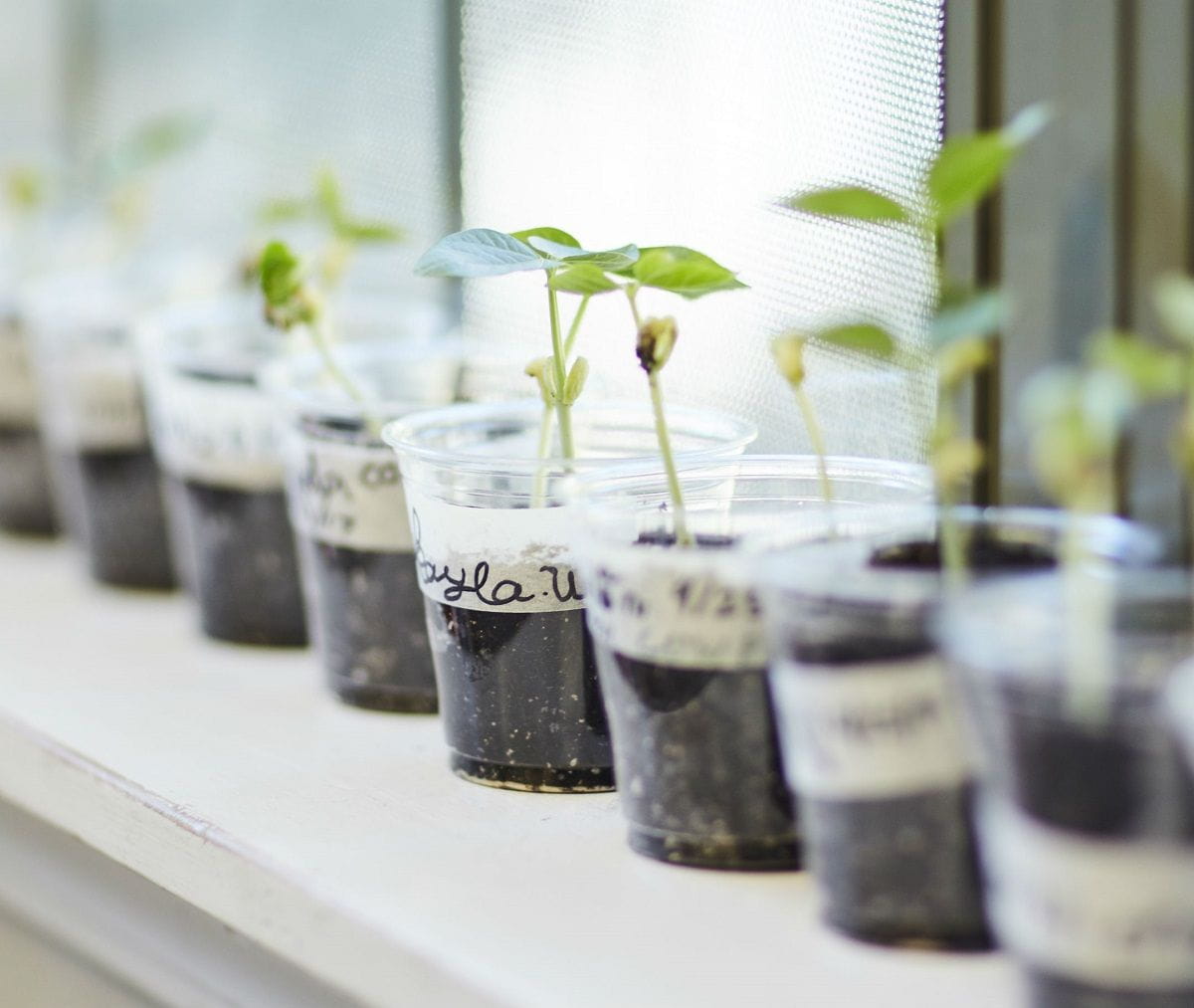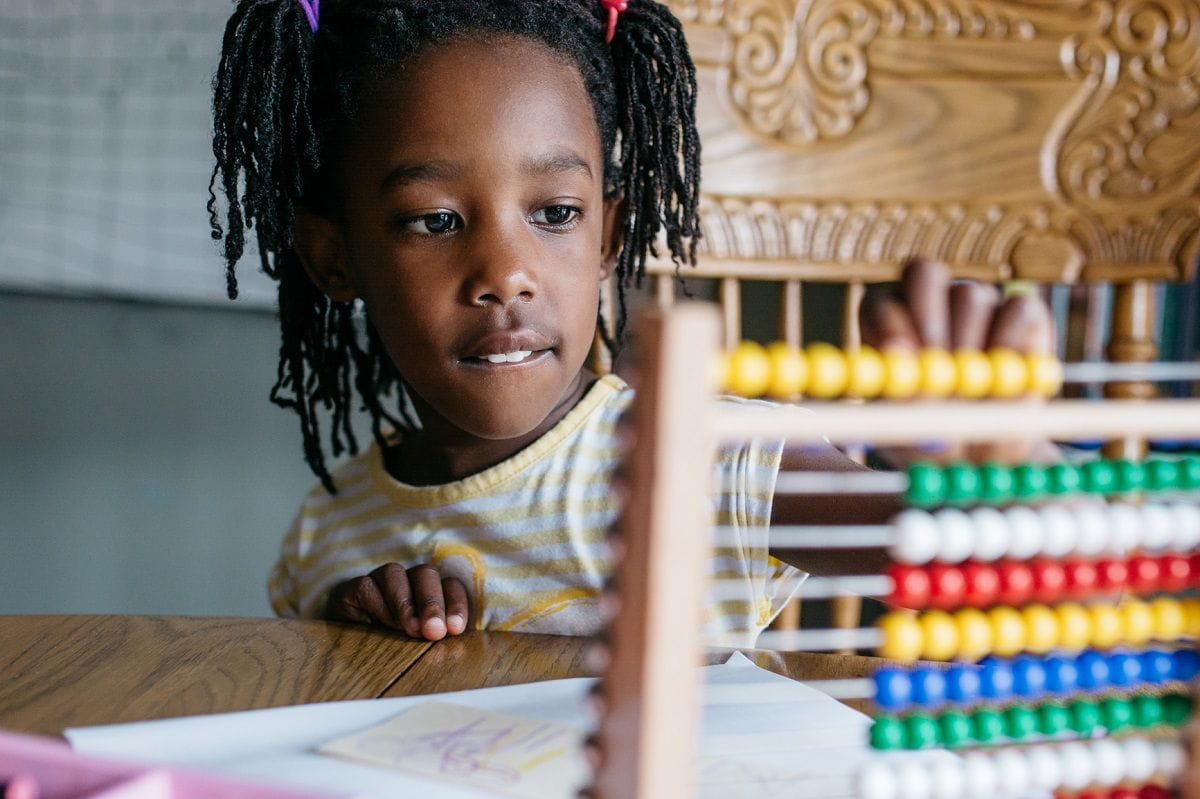Grow On! Measuring Plants Helps Toddlers Get Ready for Counting Later

By Rachel Ward
Do you track your toddler’s height on a wall in your house? If you do, you know how exciting it can be (for everyone) to watch the upward trajectory.
There’s another benefit to marking up your wall: Measuring (anything) teaches math concepts in a way that toddlers can understand.
“By around age two, children have both the language and critical-thinking skills to begin learning basic math and science concepts,” says Meg Davis from KinderCare’s Education team. “The key to teaching math and science at a very young age? Use real-world examples and experiences.”
That’s why measuring is so powerful. When you exclaim, “Wow, look at that mark! You grew so much taller,” you’re teaching comparisons by showing your toddler something they can see, which makes the lesson stick. (Parents, we like to say, are a child’s first teacher, so good work!)
Even if you’re not into the idea of marking up the walls of your house, don’t worry. In class this week, our toddlers are measuring another surefire grower: plants.
We Use Early Math Activities to Prepare Toddlers for Learning Numbers
In this simple activity, toddlers hold lengths of yarn next to plants to see if they are taller or shorter than the yarn. Easy? Yes. But for two-year-olds, this activity is a huge math skill booster. “Understanding the difference between ‘smaller’ and ‘bigger’ teaches comparisons, which is a core math concept,” explains Davis. “This kind of activity actually lays the foundation for learning numbers in the future.”
You can play around with comparisons at home, too. All it takes is a little forethought and a few tweaks to your daily routine so that you can include your future math genius.
Bring the Math Learning Home: Math Activities Toddlers Will Love

1. Grab an Abacus
A great tool for teaching, a simple abacus teaches comparisons at a glance. Ask your toddler which side of the row has more balls and which has less. You can even try counting to get them a little more familiar with numbers.
2. Bring Math into Snack Time
Does your child like to play with food? Fantastic! Now you can make snack time math time. Pour out a box of raisins or a bag of Goldfish onto a plate and separate them into two groups. Which pile is bigger or has more? Which pile is smaller or has fewer? To extend the learning to counting, have your child take one raisin or cracker away at a time, counting as they go.
3. Think about Comparisons at Story Time
A lot of great kids’ books introduce math concepts like comparisons in fun and engaging ways. Some of our favorites include Size (Math Counts) by Henry Arthur Pluckrose and Me and the Measure of Things by Joan Sweeney. Buy any book illustrated book works for a quick math chat: Just look for comparisons in the illustrations. Which character is tallest? Which is smallest? Which vehicle has more wheels: the motorcycle, the train, or the truck? (You get the idea.)
4. Get Sorting at Laundry Time
Odds are you don’t like sorting laundry—but your toddler might! When you’re folding and putting away clean clothes, let your two-year-old help sort them by size or color. Which pieces of clothing are the biggest? Which are the smallest? Are there more socks or shirts? Is there one color that dominates the laundry pile?




